
The dolphin who loved me: the Nasa-funded project that went wrong | Dolphins | The Guardian
In the 1960s, Margaret Lovatt was part of a Nasa-funded project to communicate with dolphins. Soon she was living with ‘Peter’ 24 hours a day in a converted house. theguardian.com/environment/20…
In the 1960s, Margaret Lovatt was part of a Nasa-funded project to communicate with dolphins. Soon she was living with ‘Peter’ 24 hours a day in a converted house. theguardian.com/environment/20…
Like most children, Margaret Howe Lovatt grew up with stories of talking animals.
In her early 20s, living on the Caribbean island of St Thomas, they took on a new significance. During Christmas 1963, her brother-in-law mentioned a secret laboratory at the eastern end of the island where they were working with dolphins.
“There were three dolphins,” remembers
“There were three dolphins,” remembers
Lovatt. “Peter, Pamela and Sissy. Sissy was the biggest. Pushy, loud, she sort of ran the show. Pamela was very shy and fearful. And Peter was a young guy. He was sexually coming of age and a bit naughty.” 
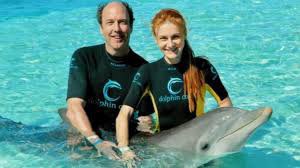
The facility had been designed to bring humans and dolphins into closer proximity and was the brainchild of an American neuroscientist, Dr John Lilly. Here, Lilly hoped to commune with the creatures, nurturing their ability to make human-like sounds through their blow holes. 
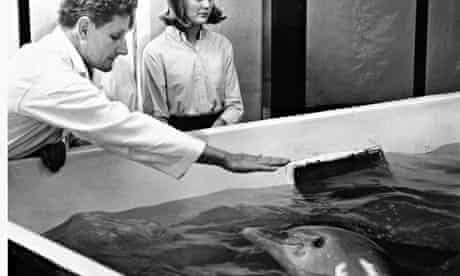
This interest helped Lilly win financial backing from Nasa and other government agencies, and Lilly opened his new lab in the Caribbean in 1963, with the aim of nurturing closer relationships between man and dolphin.
Lilly had been researching the mind-altering powers of the
Lilly had been researching the mind-altering powers of the

drug LSD since the early 1960s. The wife of Ivan Tors, the producer of the dolphin movie Flipper, had first introduced him to it at a party in Hollywood.
For the actor Jeff Bridges, who was introduced to Lilly by his father Lloyd, Lilly’s self-experimentation with LSD was just
For the actor Jeff Bridges, who was introduced to Lilly by his father Lloyd, Lilly’s self-experimentation with LSD was just
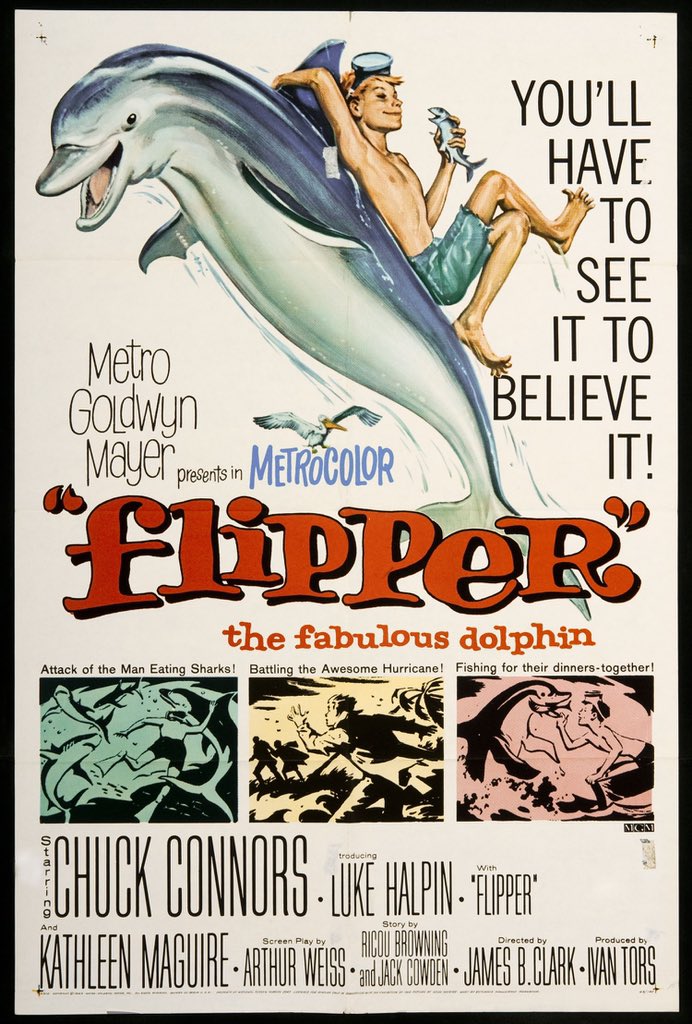
part of who he was. “John Lilly was above all an explorer of the brain and the mind, and all those drugs that expand our consciousness,” reflects Bridges. “There weren’t too many people with his expertise and his scientific background doing that kind of work.”
In the 1960s a
In the 1960s a
small selection of neuroscientists like John Lilly were licensed to research LSD by the American government, convinced that the drug had medicinal qualities that could be used to treat mental-health patients.
John Cunningham Lilly (January 6, 1915 – September 30, 2001) was an
John Cunningham Lilly (January 6, 1915 – September 30, 2001) was an
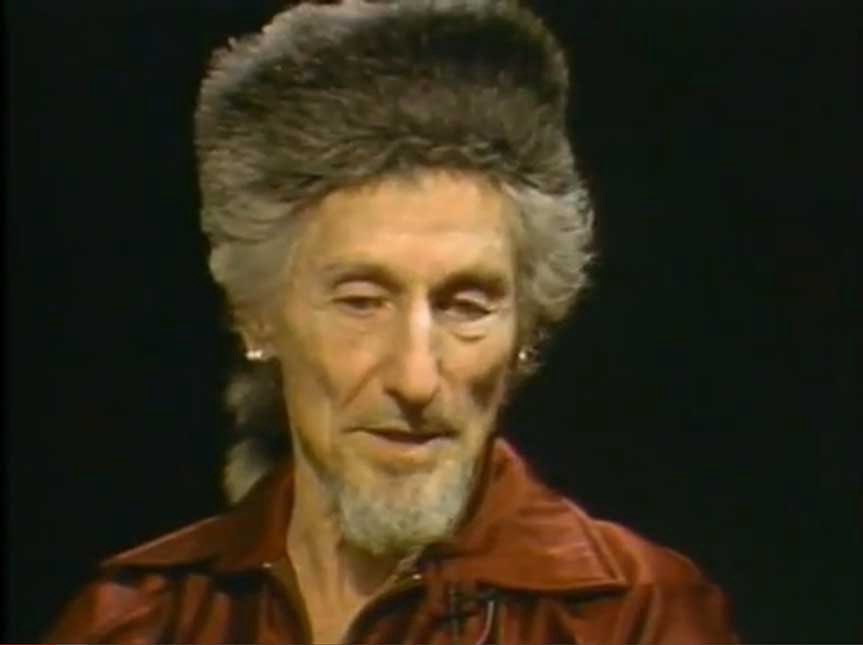
American physician, neuroscientist, psychoanalyst, psychonaut, philosopher, writer and inventor. He was a member of a generation of counterculture scientists and thinkers that included Ram Dass, Werner Erhard and Timothy Leary, all frequent visitors to the Lilly home.
Lilly was
Lilly was
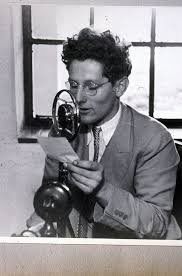
born to a wealthy family on January 6, 1915, in Saint Paul, Minnesota. His father was Richard Coyle Lilly, president of the First National Bank of St. Paul. His mother was Rachel Lenor Cunningham, whose family owned the Cunningham & Haas Company, a large stockyards company in 

St. Paul.
Despite his father's wish that he go to an eastern Ivy League university to become a banker, Lilly received a scholarship at the California Institute of Technology in Pasadena, California, where he studied biology. He was the president of the ski club and a member of
Despite his father's wish that he go to an eastern Ivy League university to become a banker, Lilly received a scholarship at the California Institute of Technology in Pasadena, California, where he studied biology. He was the president of the ski club and a member of
the drama club, and lived in Blacker House.
Blacker House was built with the help of funds donated by Robert Roe Blacker, a trustee of Caltech. Members of Blacker House are referred to as Moles.
One of the traditions of Blacker House is the hellride. In a defiant response to the
Blacker House was built with the help of funds donated by Robert Roe Blacker, a trustee of Caltech. Members of Blacker House are referred to as Moles.
One of the traditions of Blacker House is the hellride. In a defiant response to the
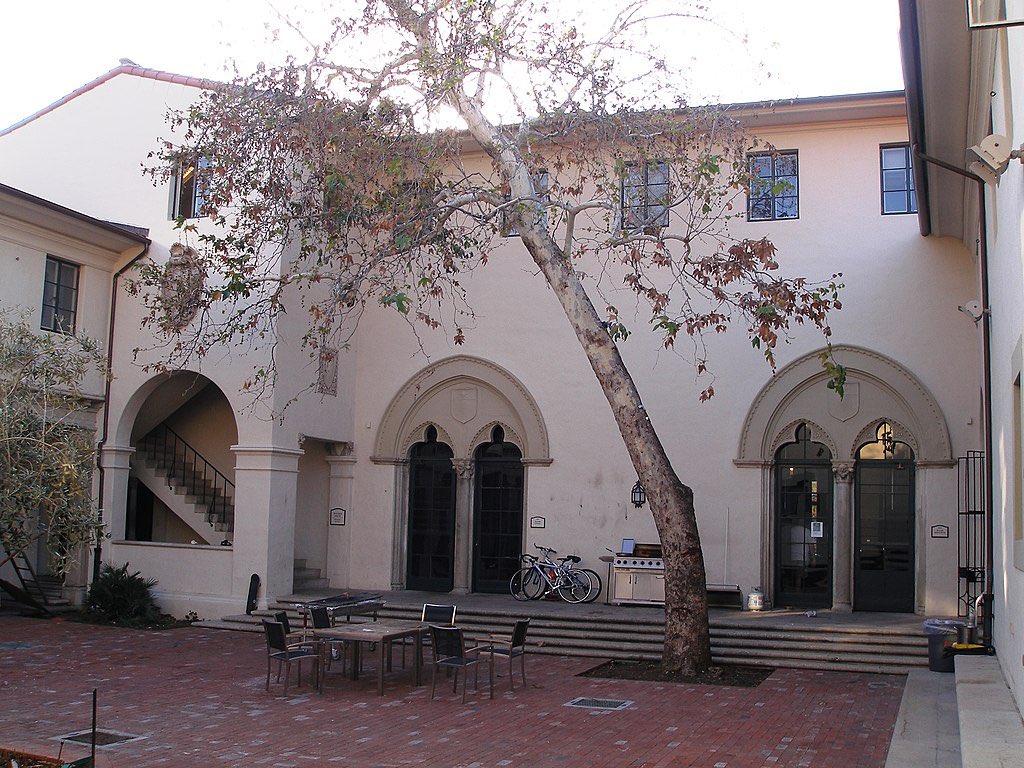
prohibition against playing Ride of the Valkyries, the freshmen living in a part of the house named Hell (so called for its unbearable heat in the summer and cramped quarters) would announce a hellride.
The Blacker House slogan γδβγ mysteriously appears on a camera calibration target on NASA's Curiosity rover. If anyone at the Caltech Jet Propulsion Laboratory knows how it got there, they aren't telling. 

Notable alumni include:
•William Shockley (1932) co-inventor of the transistor and Nobel laureate
•Walter Munk (1939) oceanographer who determined the reason for the moon's tidal locking with earth
•Carver Mead (1956) a key pioneer of modern microelectronics
•William Shockley (1932) co-inventor of the transistor and Nobel laureate
•Walter Munk (1939) oceanographer who determined the reason for the moon's tidal locking with earth
•Carver Mead (1956) a key pioneer of modern microelectronics
•Kip Thorne (1962) Nobel Laureate and one of the world's leading experts on the astrophysical implications of Einstein's general theory of relativity, Richard P. Feynman Professor of Theoretical Physics, Emeritus at Caltech
•Michael Aschbacher (1966) an American mathematician best known for his work on finite groups
•Joseph Rhodes Jr. (1969, History) Pennsylvanian politician and activist
•Joseph Polchinski (1975) known for D-branes in string theory
•Zinovy Reichstein (1983,
•Joseph Rhodes Jr. (1969, History) Pennsylvanian politician and activist
•Joseph Polchinski (1975) known for D-branes in string theory
•Zinovy Reichstein (1983,
Mathematics) Mathematician, known for introducing the essential dimension
•Ian Agol (1992, Mathematics) Mathematician known for work in topology, professor at the University of California, Berkeley
•Doris Tsao (1997) – MacArthur Fellow, Neuroscientist, Professor of
•Ian Agol (1992, Mathematics) Mathematician known for work in topology, professor at the University of California, Berkeley
•Doris Tsao (1997) – MacArthur Fellow, Neuroscientist, Professor of
Biology at Caltech
•Po-Shen Loh (2004, Mathematics) Professor of Mathematics at Carnegie Mellon University, coach of USA International Math Olympiad team
The house system is the basis of undergraduate student residence at the California Institute of Technology (Caltech).
•Po-Shen Loh (2004, Mathematics) Professor of Mathematics at Carnegie Mellon University, coach of USA International Math Olympiad team
The house system is the basis of undergraduate student residence at the California Institute of Technology (Caltech).
Caltech's unique house system is modeled after the residential college system of Oxford and Cambridge in England, although the houses are probably more similar in size and character to the Yale University residential colleges and Harvard University house system.
In 1934, Lilly
In 1934, Lilly
read Aldous Huxley's Brave New World. The pharmacological control methods of Huxley's dystopia and the links between physical chemical processes of the brain and subjective experiences of the mind helped inspire Lilly to give up his study of physics and pursue biology,
eventually focusing on neurophysiology.
In 1937, while Lilly was looking for a good medical school, his wealthy and well-connected father arranged a meeting between Lilly and Charles Horace Mayo of the famous Mayo Clinic in Rochester, Minnesota. Following Mayo's advice, Lilly
In 1937, while Lilly was looking for a good medical school, his wealthy and well-connected father arranged a meeting between Lilly and Charles Horace Mayo of the famous Mayo Clinic in Rochester, Minnesota. Following Mayo's advice, Lilly
applied and was accepted to Dartmouth Medical School in Hanover, New Hampshire, where he became good friends with Mayo's son, Charles William Mayo.
While finishing his degree at the University of Pennsylvania, Lilly enrolled in a class entitled "How to Build an Atomic Bomb." He
While finishing his degree at the University of Pennsylvania, Lilly enrolled in a class entitled "How to Build an Atomic Bomb." He
and several other students transcribed their notes from the class into a book with the same title. The director of the Manhattan Project, General Leslie Groves, attempted to suppress publication of the book, but was unable to because no classified data were used in writing the
book.
In 1953, Lilly began a job studying neurophysiology with the U.S. Public Health Service Commissioned Officers Corps. At the N.I.M.H. in 1954, with the aim of isolating a brain from external stimulation, he devised the first isolation tank, a dark soundproof tank of warm
In 1953, Lilly began a job studying neurophysiology with the U.S. Public Health Service Commissioned Officers Corps. At the N.I.M.H. in 1954, with the aim of isolating a brain from external stimulation, he devised the first isolation tank, a dark soundproof tank of warm
salt water in which subjects could float for long periods in sensory isolation.
The National Institute of Mental Health (NIMH) is one of 27 institutes and centers that make up the National Institutes of Health (NIH).
The institute was first authorized by the U.S. government in
The National Institute of Mental Health (NIMH) is one of 27 institutes and centers that make up the National Institutes of Health (NIH).
The institute was first authorized by the U.S. government in
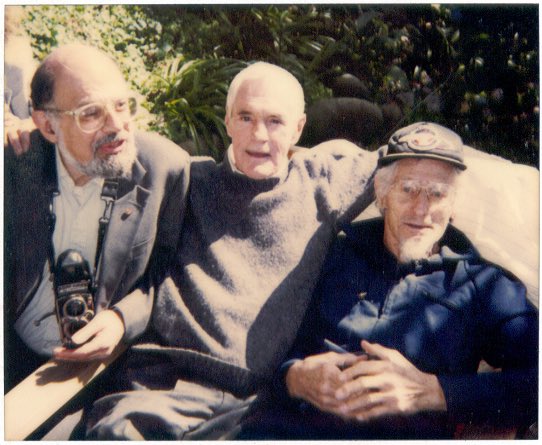
1946, when then President Harry Truman signed into law the National Mental Health Act, although the institute was not formally established until 1949.
In 1963, Congress passed the Mental Retardation Facilities and Community Mental Health Centers Construction Act, beginning a
In 1963, Congress passed the Mental Retardation Facilities and Community Mental Health Centers Construction Act, beginning a
new era in Federal support for mental health services. NIMH assumed responsibility for monitoring the Nation's community mental health centers (CMHC) programs.
During the mid-1960s, NIMH launched a campaign on special mental health problems. Part of this was a response to
During the mid-1960s, NIMH launched a campaign on special mental health problems. Part of this was a response to
President Lyndon Johnson's pledge to apply scientific research to social problems. The institute established centers for research on schizophrenia, child and family mental health, suicide, as well as crime and delinquency, minority group mental health problems, urban problems,
and later, rape, aging, and technical assistance to victims of natural disasters.
In 1967, NIMH separated from NIH and was given bureau status within PHS. However, NIMH's intramural research program, which conducted studies in the NIH Clinical Center and other NIH facilities,



In 1967, NIMH separated from NIH and was given bureau status within PHS. However, NIMH's intramural research program, which conducted studies in the NIH Clinical Center and other NIH facilities,
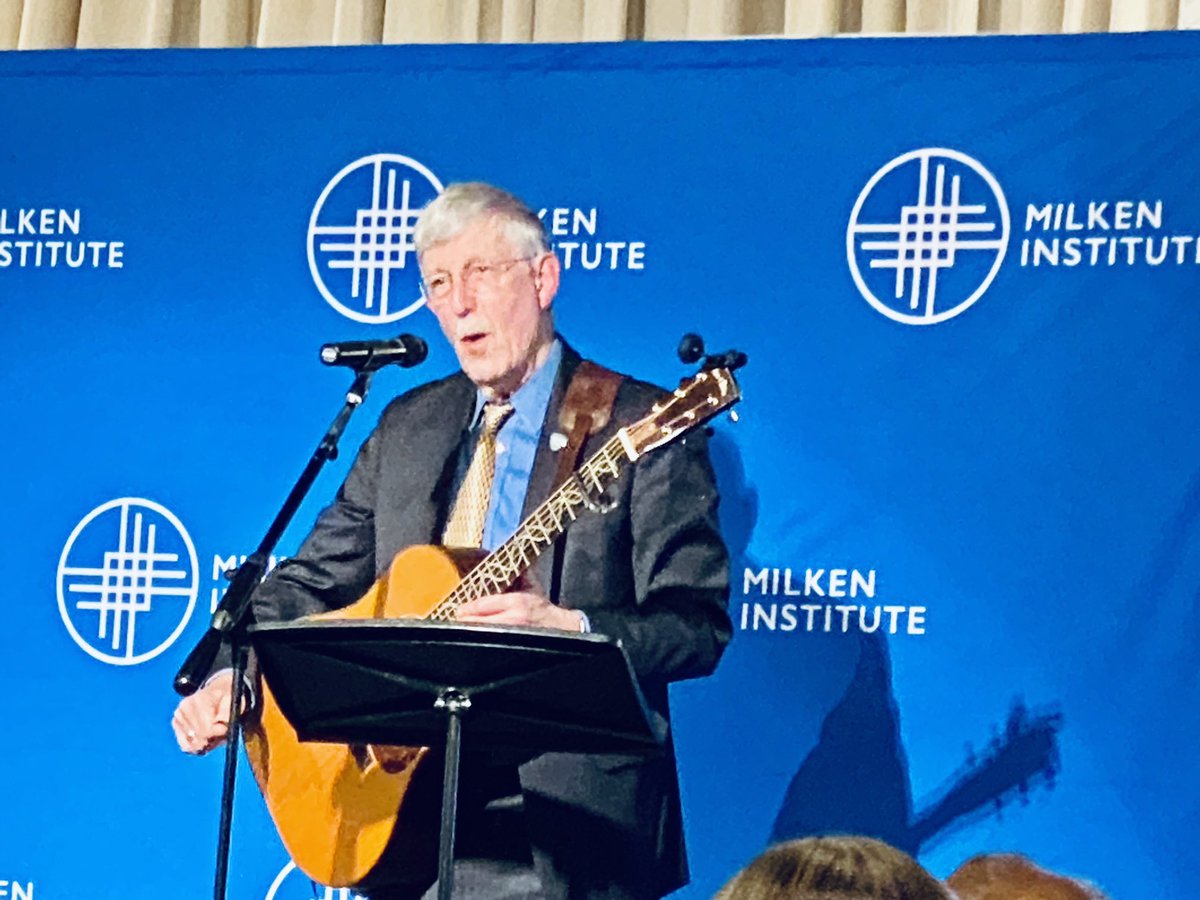

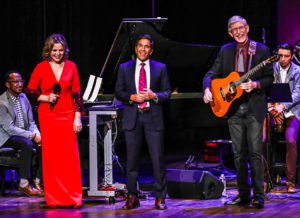

remained at NIH under an agreement for joint administration between NIH and NIMH. Secretary of Health, Education, and Welfare John W. Gardner transferred St. Elizabeths Hospital, the Federal Government's only civilian psychiatric hospital, to NIMH.
Gardner was featured on the
Gardner was featured on the

cover and in an article of the January 20, 1967 Time magazine, and later that year also presided over the creation of the Corporation for Public Broadcasting.
During the early days of World War II Gardner was chief of the Latin American Section, Foreign Broadcast Intelligence
During the early days of World War II Gardner was chief of the Latin American Section, Foreign Broadcast Intelligence
Service. He subsequently entered the United States Marine Corps and was assigned to the O.S.S., serving in Italy and Austria.
The Corporation for Public Broadcasting was created on November 7, 1967, when U.S. president Lyndon B. Johnson signed the Public Broadcasting Act of
The Corporation for Public Broadcasting was created on November 7, 1967, when U.S. president Lyndon B. Johnson signed the Public Broadcasting Act of
1967. The new organization initially collaborated with the National Educational Television network—which would be replaced by the Public Broadcasting Service (PBS).
On February 26, 1970, the CPB formed National Public Radio (NPR), a network of public-radio stations that began
On February 26, 1970, the CPB formed National Public Radio (NPR), a network of public-radio stations that began
operating the following year.
National Educational Television (NET) was an American educational broadcast television network owned by the Ford Foundation and later co-owned by the Corporation for Public Broadcasting. It operated from May 16, 1954 to October 4, 1970, and was
National Educational Television (NET) was an American educational broadcast television network owned by the Ford Foundation and later co-owned by the Corporation for Public Broadcasting. It operated from May 16, 1954 to October 4, 1970, and was

succeeded by the Public Broadcasting Service (PBS).
The network was founded as the Educational Television and Radio Center (ETRC) in November 1952 by a grant from the Ford Foundation's Fund for Adult Education (FAE).
In the spring of 1954, ETRC moved its operations to
The network was founded as the Educational Television and Radio Center (ETRC) in November 1952 by a grant from the Ford Foundation's Fund for Adult Education (FAE).
In the spring of 1954, ETRC moved its operations to

Ann Arbor, Michigan, and on May 16 of that year, it began operating as a "network".
Ann Arbor was founded in 1825 by land speculators John Allen and Elisha Walker Rumsey.
The Ann Arbor Land Company, a group of speculators, set aside 40 acres of undeveloped land and offered it
Ann Arbor was founded in 1825 by land speculators John Allen and Elisha Walker Rumsey.
The Ann Arbor Land Company, a group of speculators, set aside 40 acres of undeveloped land and offered it
to the state of Michigan as the site of the state capitol, but lost the bid to Lansing. In 1837, the property was accepted instead as the site of the University of Michigan, which moved from Detroit.
The town became a regional transportation hub in 1839 with the arrival of the
The town became a regional transportation hub in 1839 with the arrival of the
Michigan Central Railroad, and a north–south railway connecting Ann Arbor to Toledo and other markets to the south was established in 1878.
The first major meetings of the national left-wing campus group Students for a Democratic Society took place in Ann Arbor in 1960; in
The first major meetings of the national left-wing campus group Students for a Democratic Society took place in Ann Arbor in 1960; in
1965, the city was home to the first U.S. teach-in against the Vietnam War.
Students for a Democratic Society (SDS) was a national student activist organization in the United States during the 1960s, and was one of the principal representations of the New Left.
SDS developed
Students for a Democratic Society (SDS) was a national student activist organization in the United States during the 1960s, and was one of the principal representations of the New Left.
SDS developed

from the youth branch of a socialist educational organization known as the League for Industrial Democracy (LID). LID itself descended from an older student organization, the Intercollegiate Socialist Society, founded in 1905 by Upton Sinclair, Walter Lippmann, Clarence Darrow,
and Jack London. Early in 1960, to broaden the scope for recruitment beyond labor issues, the Student League for Industrial Democracy were reconstituted as SDS. They held their first meeting in 1960 on the University of Michigan campus at Ann Arbor, where Alan Haber was elected
president. The SDS manifesto, known as the Port Huron Statement, was adopted at the organization's first convention in June 1962, based on an earlier draft by staff member Tom Hayden. Under Walter Reuther's leadership, the UAW paid for a range of expenses for the 1962 convention,
including use of the UAW summer retreat in Port Huron.
Thomas Emmet Hayden (December 11, 1939 – October 23, 2016) was an American social and political activist, author, and politician. Hayden was best known for his role as an anti-war, civil rights, and intellectual activist in
Thomas Emmet Hayden (December 11, 1939 – October 23, 2016) was an American social and political activist, author, and politician. Hayden was best known for his role as an anti-war, civil rights, and intellectual activist in

the 1960s, authoring the Port Huron Statement and standing trial in the Chicago Seven case.
He was married to Jane Fonda for 17 years, and was the father of actor Troy Garity.
Jane Seymour Fonda was born on December 21, 1937, in New York City. Her parents were Canadian-born
He was married to Jane Fonda for 17 years, and was the father of actor Troy Garity.
Jane Seymour Fonda was born on December 21, 1937, in New York City. Her parents were Canadian-born
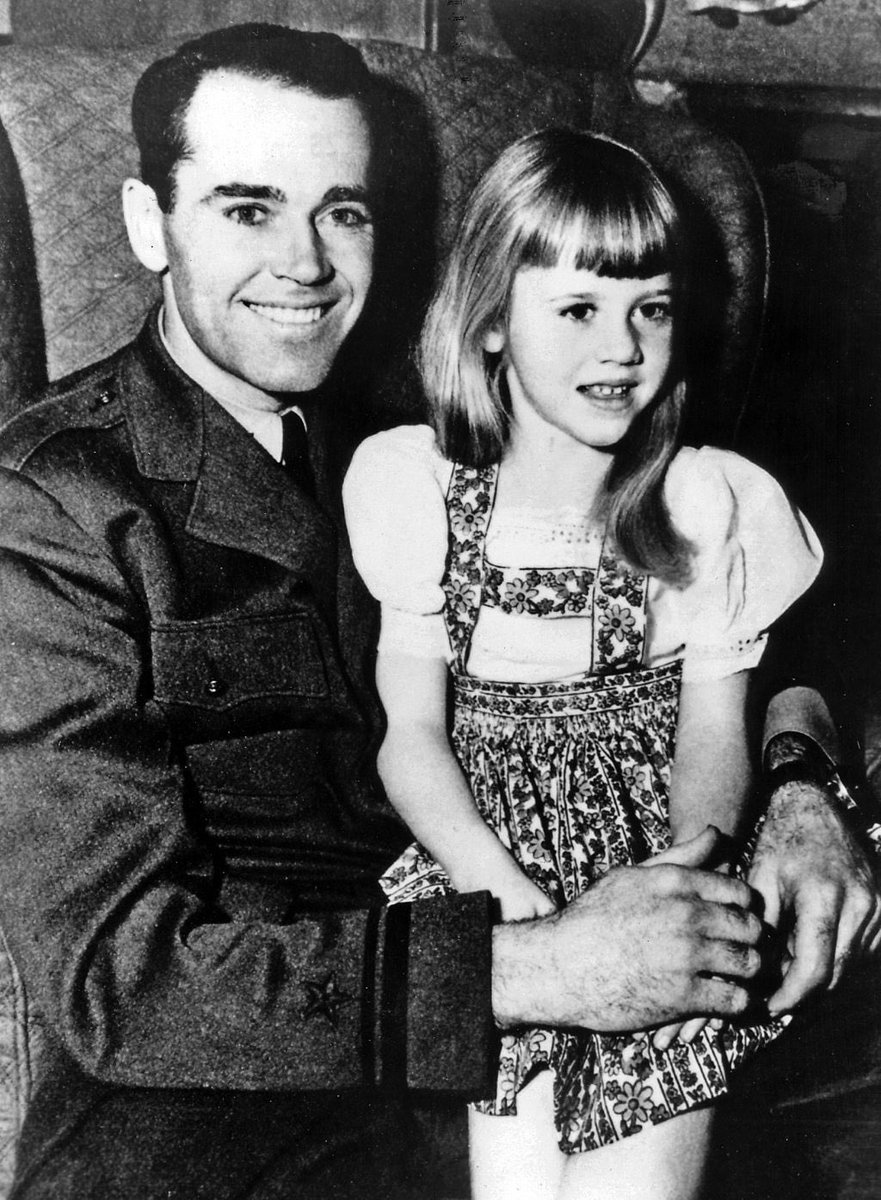
socialite Frances Ford Seymour and American actor Henry Fonda.
On 10 January 1931, Jane married George Tuttle Brokaw, a millionaire lawyer and sportsman. They had one child, Frances de Villers "Pan" Brokaw (10 October 1931 – 10 March 2008).
A year after Brokaw died, Seymour
On 10 January 1931, Jane married George Tuttle Brokaw, a millionaire lawyer and sportsman. They had one child, Frances de Villers "Pan" Brokaw (10 October 1931 – 10 March 2008).
A year after Brokaw died, Seymour

married actor Henry Fonda on 16 September 1936, at Christ Church, New York City.
On August 10, 1923, George Tuttle Brokaw married the writer, Clare Boothe (1903–1987) in Greenwich, Connecticut.
On January 10, 1931, Brokaw married Frances Ford Seymour (1908–1950).
On August 10, 1923, George Tuttle Brokaw married the writer, Clare Boothe (1903–1987) in Greenwich, Connecticut.
On January 10, 1931, Brokaw married Frances Ford Seymour (1908–1950).
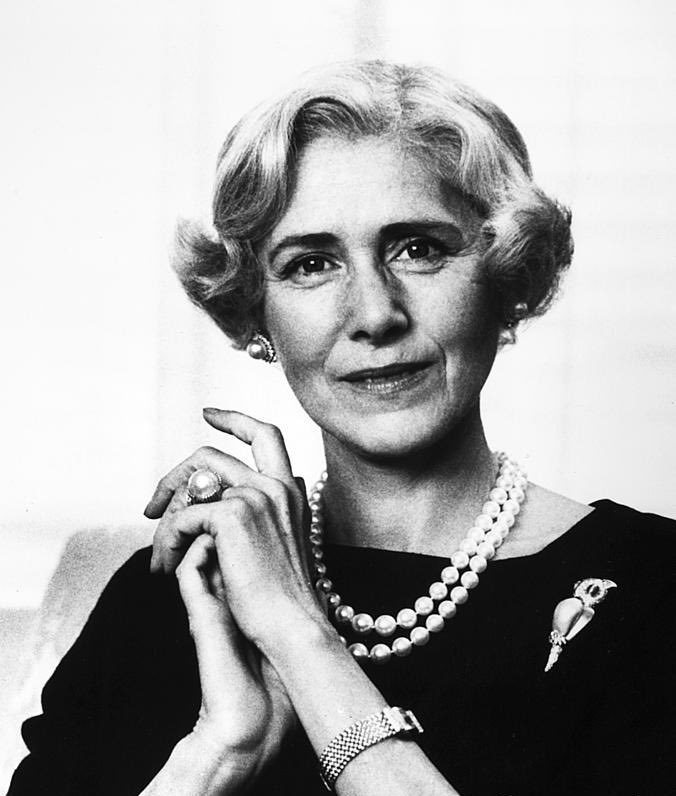
Clare Boothe Luce was a leading conservative in later life and was well known for her anti-communism. In her youth, she briefly aligned herself with the liberalism of President Franklin Roosevelt as a protégé of Bernard Baruch.
After our entry into World War I, Woodrow Wilson
After our entry into World War I, Woodrow Wilson
turned the government of the United States over to a triumvirate of his campaign backers, Paul Warburg, Bernard Baruch and Eugene Meyer. Baruch was appointed head of the War Industries Board, with life and death powers over every factory in the United States. Eugene Meyer was 


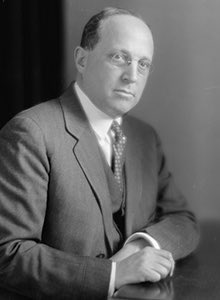
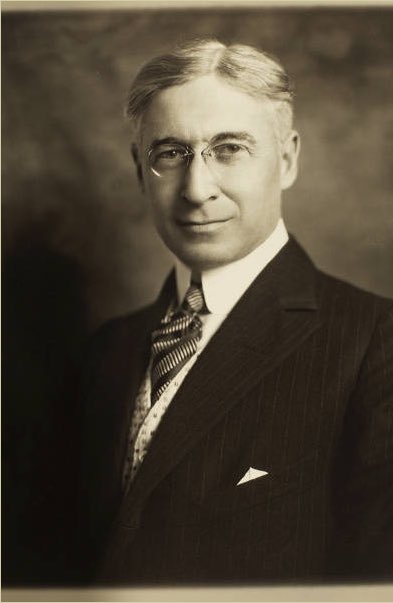

appointed head of the War Finance Corporation, in charge of the loan program which financed the war. Paul Warburg was in control of the nation’s banking system.
Knowing that the overwhelming sentiment of the American people during 1915 and 1916 had been anti-British and
Knowing that the overwhelming sentiment of the American people during 1915 and 1916 had been anti-British and
pro-German, our British allies viewed with some trepidation the prominence of Paul Warburg and Kuhn, Loeb Company in the prosecution of the war.
They were uneasy about his high position in the Administration because his brother, Max Warburg, was at that time serving as head of
They were uneasy about his high position in the Administration because his brother, Max Warburg, was at that time serving as head of
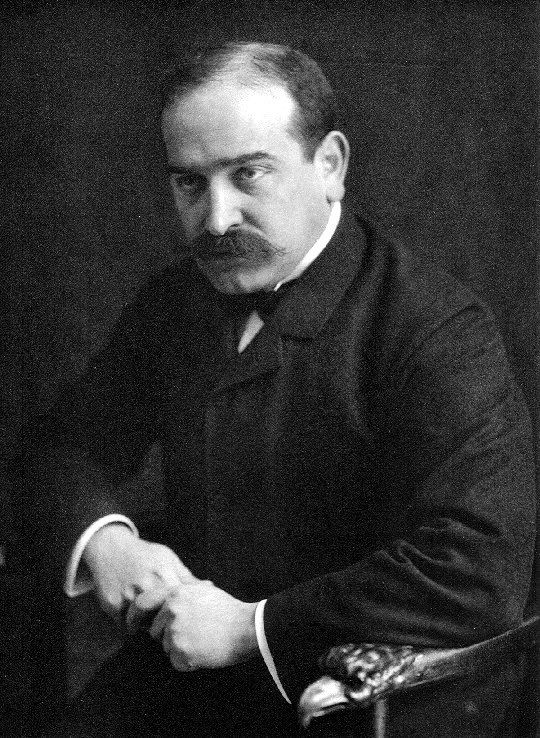
the German Secret Service.
From 1933, Max Warburg served on the board of the German Reichsbank alongside governor Hjalmar Schacht.
Max Warburg married Alice Magnus in 1899, and together they had four daughters (including Lola Helene Nina Hahn-Warburg, who instigated the
From 1933, Max Warburg served on the board of the German Reichsbank alongside governor Hjalmar Schacht.
Max Warburg married Alice Magnus in 1899, and together they had four daughters (including Lola Helene Nina Hahn-Warburg, who instigated the

Kindertransport initiative to the United Kingdom) and a son, Eric Warburg (1900–1990), who served during WW2 and was later involved with the OSS, along with founding E.M. Warburg & Co, later known as Warburg Pincus. His company did deals on Wall Street with help of people like
Alan Dulles, and he maintained a close relationship with John J. McCloy over the years.
In 1939, Eric Warburg of the Warburg banking family founded a company under the name E.M. Warburg & Co. Its first address was 52 William Street, New York, the Kuhn Loeb building. Throughout
In 1939, Eric Warburg of the Warburg banking family founded a company under the name E.M. Warburg & Co. Its first address was 52 William Street, New York, the Kuhn Loeb building. Throughout
the early post-war period, the firm was a small office of 20 employees. In 1966, E.M. Warburg merged with Lionel I. Pincus & Co, forming a new company that eventually became known as E.M. Warburg, Pincus & Co. In 1965, when Eric Warburg retired to Germany, control was handed to
Lionel Pincus, a partner in the Ladenburg Thalmann investment bank, and the working language of the office switched from German to English.
Ernst Thalmann, an American banker, and Adolph Ladenburg, the son of German banker Emil Ladenburg, founded Ladenburg Thalmann in 1876.
Ernst Thalmann, an American banker, and Adolph Ladenburg, the son of German banker Emil Ladenburg, founded Ladenburg Thalmann in 1876.
On 17 March 1852, Ladenburg married Eugénie Adèle Halphen (1829–1866), the daughter of a respected Parisian family related to the Paris Rothschilds.
Ladenburg Thalmann became one of the most influential private merchant banking firms, a major financial intermediary between
Ladenburg Thalmann became one of the most influential private merchant banking firms, a major financial intermediary between
America, Great Britain, and the European Continent. It played an important role in financing the growth of American industry—particularly America’s railroads, utilities, and emerging industries—through the early twentieth century and was among the few investment banks to prosper
during the Great Depression. It has financed the merger of Ferrocarril Central Mexicano (Mexican Central Railway) of Mexico, the electrification of Companhia Paulista de Estradas de Ferro in Brazil, led the syndicate for Port Authority of New York and New Jersey bonds and was the
bank Albert Einstein chose to invest 75% of his Nobel Prize money.
In the early part of the 20th century, many notable businessmen joined Ladenburg Thalmann as partners, including Gerson von Bleichröder and Benjamin Seymour Guinness.
Ladenburg Thalmann provided banking services
In the early part of the 20th century, many notable businessmen joined Ladenburg Thalmann as partners, including Gerson von Bleichröder and Benjamin Seymour Guinness.
Ladenburg Thalmann provided banking services
for the Allies' covert warfare activities throughout World War II. SOE in London was tasked by HM Treasury in July 1942 as the lead British agency for the acquisition of foreign currency, required in small denominations by members of the plethora of British covert wartime
agencies, as well as the escape packs of Allied aircrew. SOE turned to British Security Coordination (BSC) for help with this task; the very close links between BSC and the OSS meant that there was continual collaboration between the two agencies in support of this task.
Some
Some
of the currencies acquired were seized from ships being searched in the Contraband Control Bases, such as Bermuda, Gibraltar, and Aden, or legitimately bought from legitimate passengers on those ships. Another source was the black markets in Tangiers, Beirut, Istanbul, and
elsewhere, from the sale of commodities such as gold, platinum, diamonds, precious stones, and Swiss watches. Most of these items, in short supply because of the Allied blockade and restrictions on movement, could be purchasing using sterling by British government supply
departments within the British Empire.
The BSC was registered by the State Department as a foreign entity. It operated out of Room 3603 at Rockefeller Center and was officially known as the British Passport Control Office from which it had expanded. BSC acted as administrative
The BSC was registered by the State Department as a foreign entity. It operated out of Room 3603 at Rockefeller Center and was officially known as the British Passport Control Office from which it had expanded. BSC acted as administrative
headquarters more than operational one for SIS and the Special Operations Executive (SOE) and was a channel for communications and liaison between US and British security and intelligence organisations.
In 1939, William Stephenson arranged for the Hamilton Princess Hotel to
In 1939, William Stephenson arranged for the Hamilton Princess Hotel to
become a censorship centre. All mail, radio and telegraphic traffic bound for Europe, the U.S. and the Far East were intercepted and analyzed by 1,200 censors, of British Imperial Censorship, part of British Security Coordination (BSC), before being routed to their destination. 

The Hamilton Princess & Beach Club, A Fairmont Managed Hotel (generally known as The Princess) is one of the grandest and most famous hotels in Bermuda, located in Pembroke Parish just outside the City of Hamilton.
Bermuda had gained international recognition in 1883 when
Bermuda had gained international recognition in 1883 when
Princess Louise, the fourth daughter of Queen Victoria, visited for a winter retreat and called it a place of eternal spring. At the time, she lived in Canada with her husband, the Duke of Argyll, who was Governor General there.
The journey to Bermuda, whether by sail or by
The journey to Bermuda, whether by sail or by
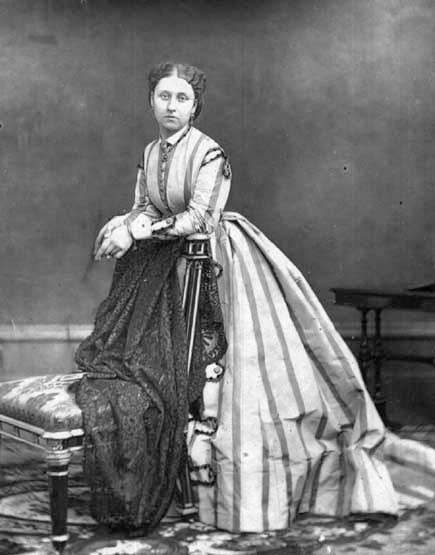
early steamship, was arduous (Princess fixture Samuel Clemens aka Mark Twain quipped, Bermuda is Heaven, but you have to go through Hell to get there!), especially as, in the early years of the industry, visitors travelled to the island for the winter months.
Katharine Seymour
Katharine Seymour
Day was a grand-niece of Harriet Beecher Stowe who had known the Clemens family, and she saved the Twain House from destruction in 1929. She founded the Friends of Hartford organization, which raised $100,000 to secure a mortgage on the home through a two-year capital campaign. 

The Richard Bissell family lived in the house until 1917. For the next four years they rented the building to the Kingswood School for boys.
Bermuda was, at the time, considered by the UK government more as a naval and military base than as a colony (it housed the chief
Bermuda was, at the time, considered by the UK government more as a naval and military base than as a colony (it housed the chief
Royal Navy base in the western North Atlantic, and the attendant large military garrison to guard it).
Two 1892 Acts of the Bermudian Parliament authorised the creation in 1894 and 1895 of the Bermuda Volunteer Rifle Corps and the Bermuda Militia Artillery.
Harley Trott, a
Two 1892 Acts of the Bermudian Parliament authorised the creation in 1894 and 1895 of the Bermuda Volunteer Rifle Corps and the Bermuda Militia Artillery.
Harley Trott, a
leading businessman at the time and head of Trott & Cox, the steamship agents and purveyors of meat for the British military, was determined to build a hotel that would attract affluent Americans, who would summer in the Berkshires and winter in Bermuda.
From the moment it
From the moment it
opened, The Princess was considered the gem of the island.
Wartime guest Ian Fleming is said to have used its fish tank-lined Gazebo Bar as a motif in his novel, Dr. No.
Wartime guest Ian Fleming is said to have used its fish tank-lined Gazebo Bar as a motif in his novel, Dr. No.
In 1939, when the world went to war, The Fairmont Hamilton Princess was under British Censorship and home to Allied servicemen. The basement became an intelligence center and way station where all mail, radio and telegraphic traffic bound for Europe, the U.S. and the Far East
were intercepted and analyzed by 1,200 censors, of British Imperial Censorship, part of British Security Coordination (BSC), before being routed to their destination.
Rumor has it that it was nicknamed 'Bletchley-in-the-Tropics' after the English country house where the Enigma
Rumor has it that it was nicknamed 'Bletchley-in-the-Tropics' after the English country house where the Enigma
code was broken (Sir William Stephenson, the Canadian-born British spymaster who was the subject of the book and film A Man Called Intrepid resided for a time at the Princess, following the war, before buying a home on the island, and was often visited there by his former 
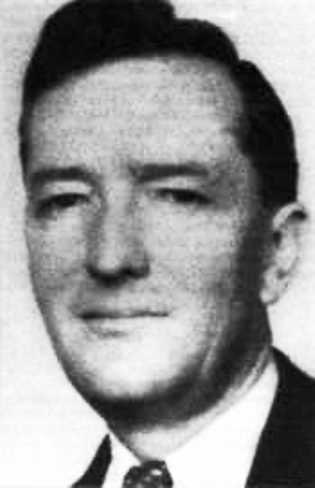
subordinate, James Bond novelist Ian Fleming).
With BSC working closely with the FBI, the censors were responsible for the discovery and arrest of a number of Axis spies operating in the US, including the Joe K ring. The censor working on the Joe K correspondence was
With BSC working closely with the FBI, the censors were responsible for the discovery and arrest of a number of Axis spies operating in the US, including the Joe K ring. The censor working on the Joe K correspondence was
Nadya Gardner who conducted chemical tests and found secret writing in some letters, according to historian H. Montgomery Hyde.
Kurt Frederick Ludwig (December 4, 1903 - December 1987) twas a German spy and the head of the "Joe K" spy ring in the United States in 1940-41.
On
Kurt Frederick Ludwig (December 4, 1903 - December 1987) twas a German spy and the head of the "Joe K" spy ring in the United States in 1940-41.
On
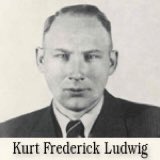
March 6, 1942 they were all found guilty of all charges. Mayer, Mueller and Pagel each received 15 years, Schlosser for 12 years, and Schroetter for 10. Lucy Boehmler was sentenced to five years. Because their spying was undertaken before the U.S. entered World War II, Ludwig,
Borchardt, and Froehlich escaped the death penalty and were sentenced to 20 years.
Prior to the war, visitors arrived almost exclusively by sea. Although air service to Bermuda began in 1937, two years before the declaration of war, the flying boats that operated to
Prior to the war, visitors arrived almost exclusively by sea. Although air service to Bermuda began in 1937, two years before the declaration of war, the flying boats that operated to
Darrell's Island were few, and their seats were limited.
The war had resulted in the development of two American airstations on Bermuda, the Naval Operating Base, serving US Navy flying boats, and the US Army's Kindley Field, as well as the establishment of a US Army garrison
The war had resulted in the development of two American airstations on Bermuda, the Naval Operating Base, serving US Navy flying boats, and the US Army's Kindley Field, as well as the establishment of a US Army garrison
of artillery and infantry defences to re-inforce the British Army's Bermuda Garrison. Bermuda's use as a forming-up point for trans-Atlantic convoys meant that numerous ships carrying American soldiers to the North African and European theatres of war.
In 1936, Imperial Airways
In 1936, Imperial Airways
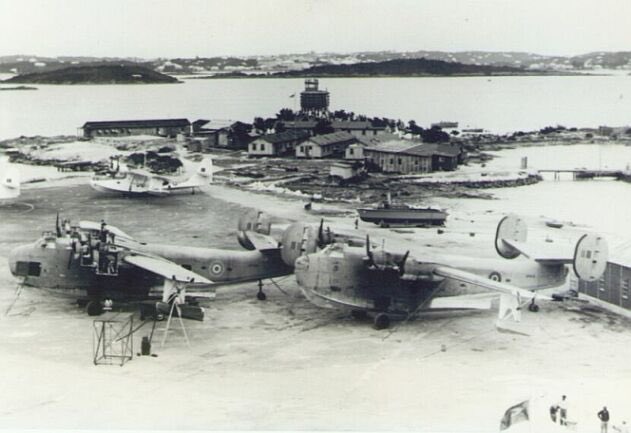
built an air station on Darrell's Island. This operated as a staging point on scheduled trans-Atlantic flights by Imperial Airways and Pan American. The island was taken over as Royal Air Force Bermuda during the Second World War.
On 1 April 1940, Imperial Airways Ltd and
On 1 April 1940, Imperial Airways Ltd and
British Airways Ltd were officially combined into a new company, British Overseas Airways Corporation (BOAC).
In 1959, American tanker billionaire Daniel K. Ludwig purchased the Princess Hotel.
Daniel Keith Ludwig was born in 1897 to Daniel Franklin Ludwig (1873–1960) and

In 1959, American tanker billionaire Daniel K. Ludwig purchased the Princess Hotel.
Daniel Keith Ludwig was born in 1897 to Daniel Franklin Ludwig (1873–1960) and
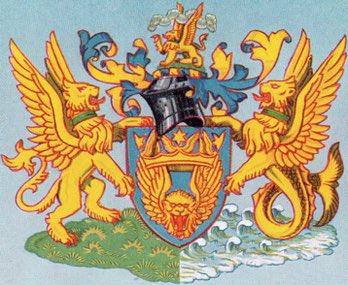

Florabelle Leslie (1876–1961) in South Haven, Michigan, on the shores of Lake Michigan.
At 19, Ludwig established a freighter business by transporting molasses and lumber around the Great Lakes. There are rumors of his engaging in rum running during the Prohibition era.
His
At 19, Ludwig established a freighter business by transporting molasses and lumber around the Great Lakes. There are rumors of his engaging in rum running during the Prohibition era.
His

National Bulk Carriers became one of the largest American shipping companies, and he eventually owned about 60 vessels. In the 1940s, one of his shipyards in Virginia developed a method to use welding instead of riveting, which saved time during World War II, when there was huge
demand for new ships.
Ludwig built or bought an impressive collection of hotels. These were: the Hamilton Princess and Southampton Princess in Bermuda; the Bahamas Princess (formerly the King's Inn) and the Xanadu Princess Tower (formerly the International) in Freeport; the
Ludwig built or bought an impressive collection of hotels. These were: the Hamilton Princess and Southampton Princess in Bermuda; the Bahamas Princess (formerly the King's Inn) and the Xanadu Princess Tower (formerly the International) in Freeport; the
Acapulco Princess and the Pierre Marques in Mexico; and the Francis Drake in San Francisco. The American millionaire recluse Howard Hughes acquired the Xanadu Princess in 1973, and lived there for the last two years of his life. 

In 1966 Ludwig became attracted to ideas of development in the Amazonian Basin. A military dictatorship had toppled the progressive Goulart government in a 1964 coup, with US backing, and US investment was encouraged by the conservative Brazilian generals in power. 🍌PBSuccess🍌
He planned to construct a pulp paper factory, known as the Jari project, as he projected a shortage of fiber on the world market in the coming decades (about which he was right). The site was downriver from American Henry Ford's failed massive project to produce rubber, for
which he built a workers' city in the jungle, Fordlandia.
The future London in Brave New World by Aldous Huxley is heavily inspired by the concept of Fordlândia.
Henry Ford, who has become a messianic figure to the World State. "Our Ford" is used in place of "Our Lord", as a
The future London in Brave New World by Aldous Huxley is heavily inspired by the concept of Fordlândia.
Henry Ford, who has become a messianic figure to the World State. "Our Ford" is used in place of "Our Lord", as a
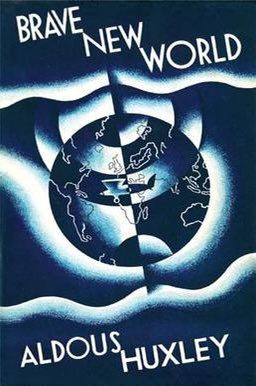
credit to popularising the use of the assembly line.
Soma: Huxley took the name for the drug used by the state to control the population after the Vedic ritual drink Soma, inspired by his interest in Indian mysticism.
After the deaths of Edsel Ford in 1943 and Henry Ford in
Soma: Huxley took the name for the drug used by the state to control the population after the Vedic ritual drink Soma, inspired by his interest in Indian mysticism.
After the deaths of Edsel Ford in 1943 and Henry Ford in
1947, the presidency of the Ford Foundation fell to Edsel's eldest son, Henry Ford II. It quickly became clear that the foundation would become the largest philanthropic organization in the world. The board of trustees then commissioned the Gaither Study Committee to chart 

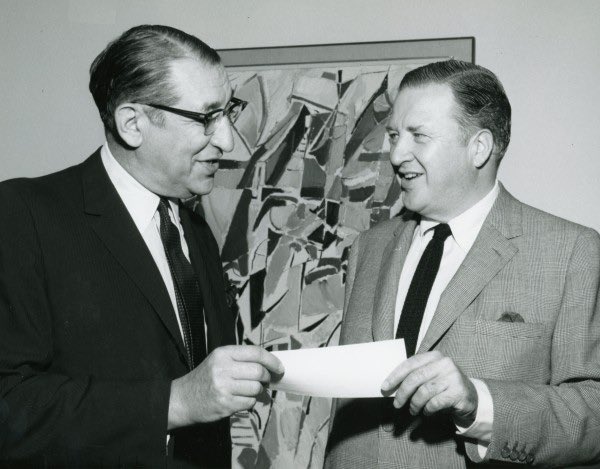
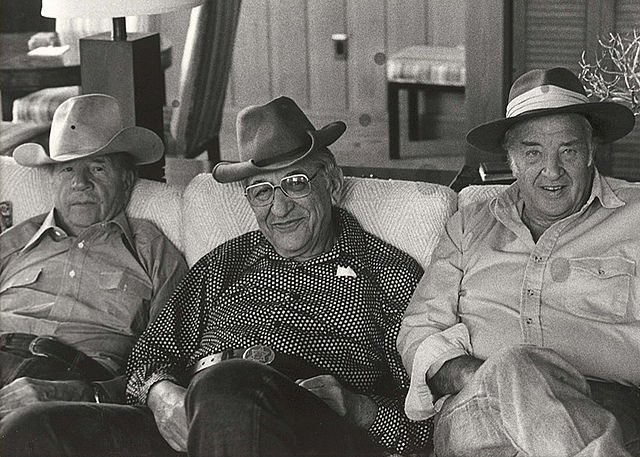
the foundation's future. The committee, headed by California attorney H. Rowan Gaither, recommended that the foundation become an international philanthropic organization.
Horace Rowan Gaither Jr. (1909 – April 7, 1961), known as H. Rowan Gaither, was a San Francisco attorney,
Horace Rowan Gaither Jr. (1909 – April 7, 1961), known as H. Rowan Gaither, was a San Francisco attorney,
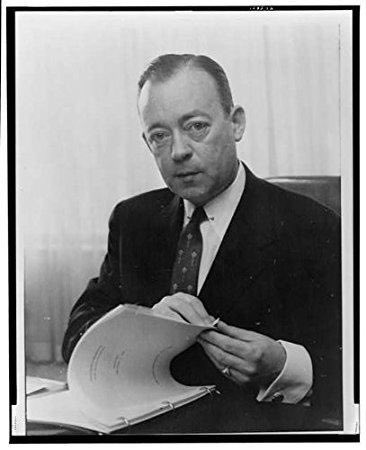
investment banker, and a powerful administrator at the Ford Foundation.
During World War II, he served as assistant director of the Radiation Laboratory at M.I.T. In 1948, he helped found the Rand Corporation and served as a trustee until 1959.
In 1958 and 1959, he served as
During World War II, he served as assistant director of the Radiation Laboratory at M.I.T. In 1948, he helped found the Rand Corporation and served as a trustee until 1959.
In 1958 and 1959, he served as
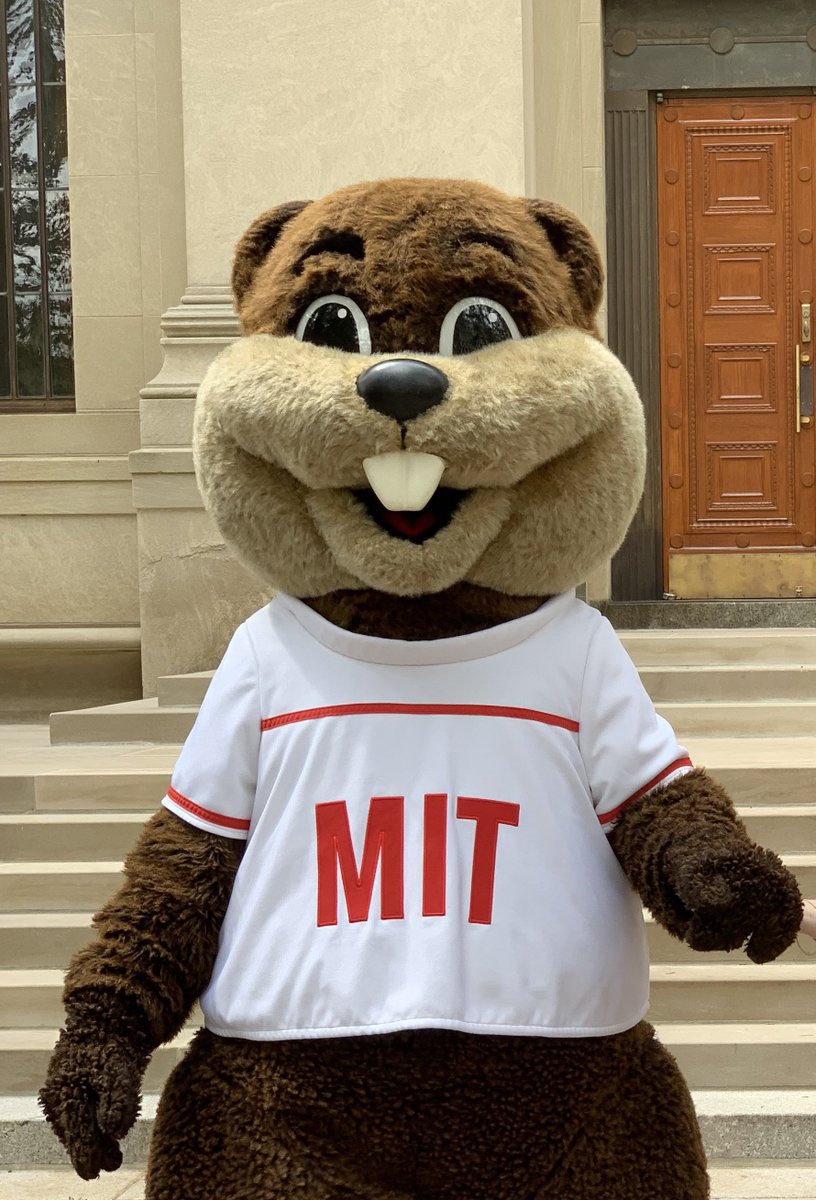
the 1st Chairman of the MITRE Corporation Board of Trustees.
From 1959 through his death, Gaither was a general partner and co-founder of Draper, Gaither & Anderson, one of the first venture capital firms on the west coast of the U.S., together with William H. Draper Jr., a
From 1959 through his death, Gaither was a general partner and co-founder of Draper, Gaither & Anderson, one of the first venture capital firms on the west coast of the U.S., together with William H. Draper Jr., a
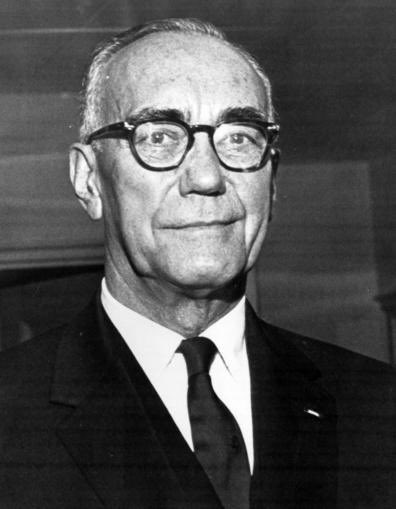
retired Army general and Frederick L. Anderson, a retired Air Force general.
He was hired by Henry Ford II to help set the priorities of the Ford Foundation in 1947
He was hired by Henry Ford II to help set the priorities of the Ford Foundation in 1947
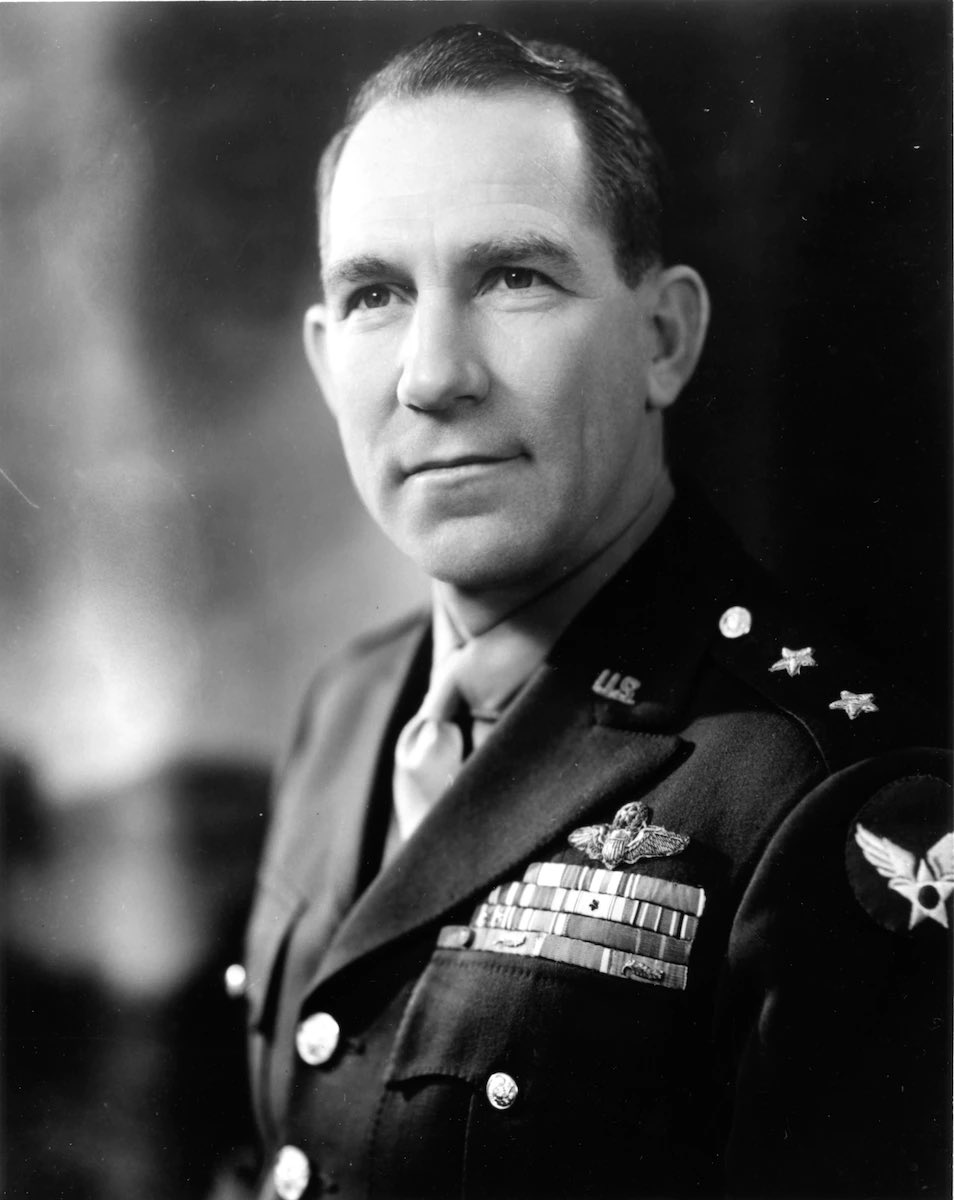
In May 1940, General Anderson was assigned as assistant to the chief of the Training Section, Training and Operations Division, Office of the Chief of Air Corps, Washington D. C., becoming deputy director of bombardment there in January 1942. A year later he was appointed
commanding general of the Eighth Bomber Command in the European Theater of Operations.
The majority were slated for administrative or instructional duties in the Army Air Forces, but there were others such as airline pilots who became Air Transport Command ferry pilots, under

The majority were slated for administrative or instructional duties in the Army Air Forces, but there were others such as airline pilots who became Air Transport Command ferry pilots, under

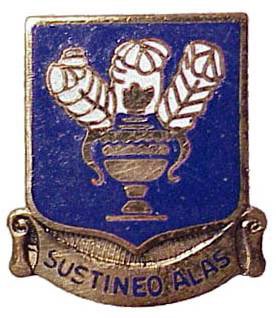
the wartime-era Service Pilot rating.
The British ferrying service was well under way when the Lend-Lease Act became law on 11 March 1941. With the North Atlantic sea lanes vulnerable to German U-boat attacks, Major General Henry H. Arnold established the Air Corps Ferrying
The British ferrying service was well under way when the Lend-Lease Act became law on 11 March 1941. With the North Atlantic sea lanes vulnerable to German U-boat attacks, Major General Henry H. Arnold established the Air Corps Ferrying
Command on May 29, 1941, to deliver lend-lease aircraft overseas from the USA. Commanded and organized by Brig. Gen. Robert Olds, the mission of the new command was, first, "to move aircraft by air from factories to such terminals as may be designated by the Chief of the Air 

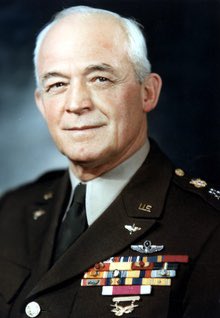

Corps," and second, "to maintain such special air ferry services [i.e., air transport services] as may be required to meet specific situations."
Hap Arnold was also the founder of Project RAND, which evolved into one of the world's largest non-profit global policy think tanks,
Hap Arnold was also the founder of Project RAND, which evolved into one of the world's largest non-profit global policy think tanks,
the RAND Corporation, and one of the founders of Pan American World Airways.
An advocate of technological research and development, his tenure saw the development of the intercontinental bomber, the jet fighter, the extensive use of radar, global airlift and atomic warfare as
An advocate of technological research and development, his tenure saw the development of the intercontinental bomber, the jet fighter, the extensive use of radar, global airlift and atomic warfare as
mainstays of modern air power.
On September 10, 1913, he and Bee married, with Thomas DeWitt Milling acting as his best man. Sent back to the Philippines in January 1914, he was quartered near 1st Lieutenant George C. Marshall [Plan] who became his mentor, friend and patron.

On September 10, 1913, he and Bee married, with Thomas DeWitt Milling acting as his best man. Sent back to the Philippines in January 1914, he was quartered near 1st Lieutenant George C. Marshall [Plan] who became his mentor, friend and patron.
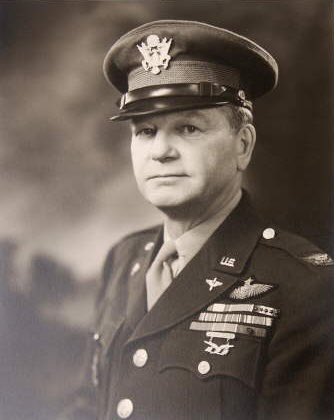
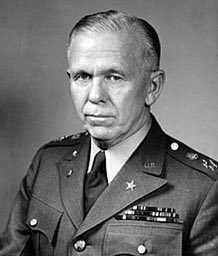
Arnold encouraged research and development efforts, among his projects the B-17 and the concept of Jet-assisted takeoff. To encourage the use of civilian expertise, the California Institute of Technology became a beneficiary of Air Corps funding and Theodore von Kármán of its
Guggenheim Aeronautical Laboratory developed a good working relationship with Arnold that led to the creation of the Scientific Advisory Group in 1944.
The Scientific Advisory Group of the United States Air Force, later renamed the Scientific Advisory Board, was established in
The Scientific Advisory Group of the United States Air Force, later renamed the Scientific Advisory Board, was established in
1944, when General Henry H. Arnold asked Dr. Theodore von Kármán to establish a group of scientists to review the techniques and research trends in aeronautics.
RAND was created after individuals in the War Department, the Office of Scientific Research and Development, and
RAND was created after individuals in the War Department, the Office of Scientific Research and Development, and
industry began to discuss the need for a private organization to connect operational research with research and development decisions. The immediate impetus for the creation of RAND was a fateful conversation in September 1945 between General Henry H. "Hap" Arnold and Douglas
executive Franklin R. Collbohm. Both men were deeply worried that ongoing demobilization meant the federal government was about to lose direct control of the vast amount of American scientific brainpower assembled to fight World War II.
On 14 May 1948, RAND was incorporated as a
On 14 May 1948, RAND was incorporated as a
nonprofit corporation under the laws of the State of California and on 1 November 1948, the Project RAND contract was formally transferred from the Douglas Aircraft Company to the RAND Corporation.
Initial capital for the spin-off was provided by the Ford Foundation.
Its most
Initial capital for the spin-off was provided by the Ford Foundation.
Its most
visible contribution may be the doctrine of nuclear deterrence by mutually assured destruction (MAD), developed under the guidance of then-Defense Secretary Robert McNamara and based upon their work with game theory. Chief strategist Herman Kahn also posited the idea of 

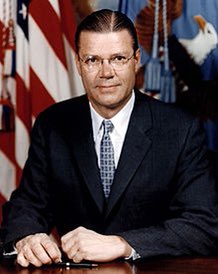
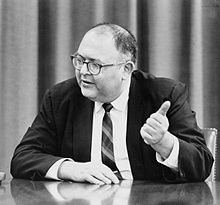
a "winnable" nuclear exchange in his 1960 book On Thermonuclear War. This led to Kahn being one of the models for the titular character of the film Dr. Strangelove, in which RAND is spoofed as the "BLAND Corporation".
In 1961, Herman Kahn, Max Singer and Oscar Ruebhausen founded the Hudson Institute, a policy research organization initially located in Croton-on-Hudson, New York, where Kahn was living at the time.
Following Herman Kahn's sudden death on July 7, 1983, Hudson was restructured.
Following Herman Kahn's sudden death on July 7, 1983, Hudson was restructured.
Actively recruited by the City of Indianapolis and the Lilly Endowment, Hudson relocated its headquarters to Indiana in 1984. In 1987, Mitch Daniels, a former aide to Senator Richard Lugar (R-IN) and President Ronald Reagan, was appointed CEO of Hudson Institute. 



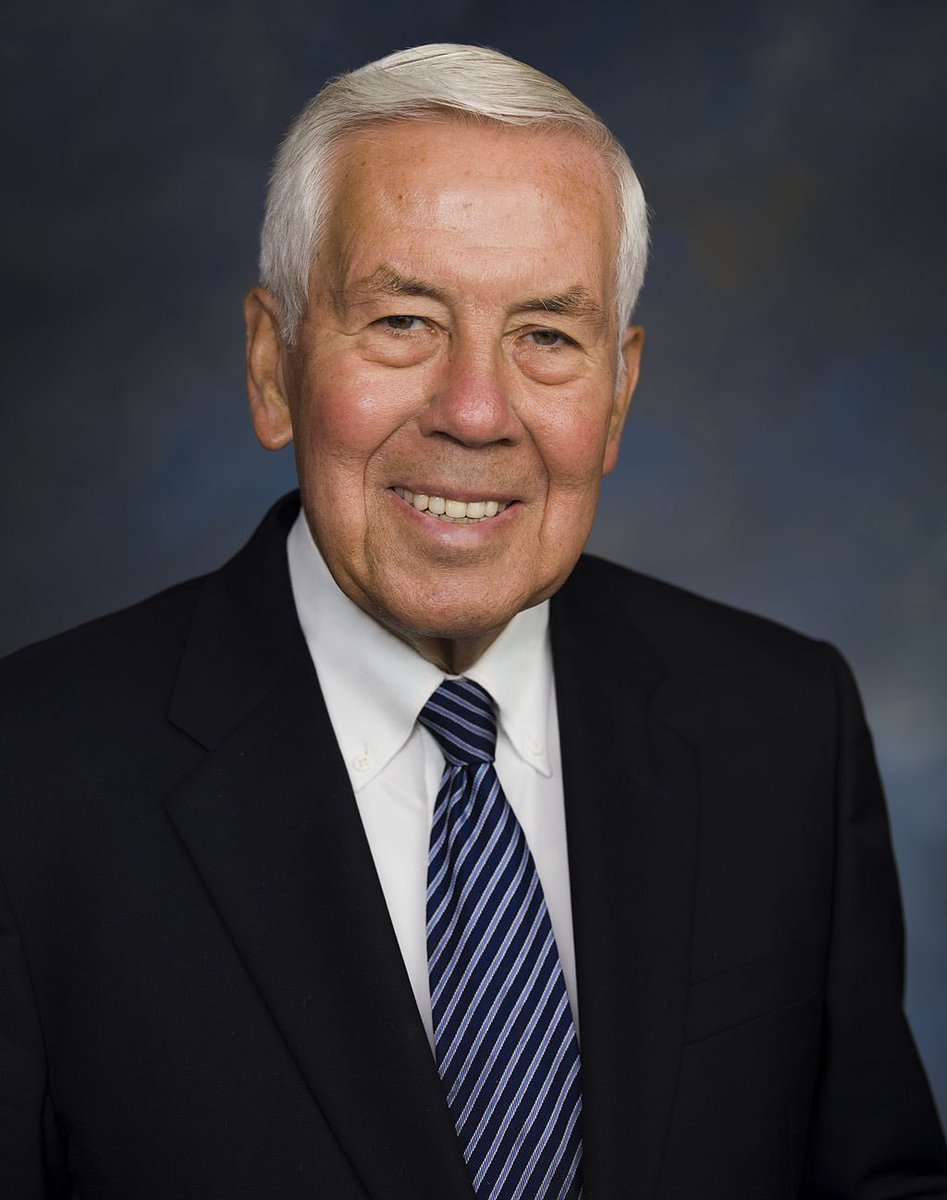
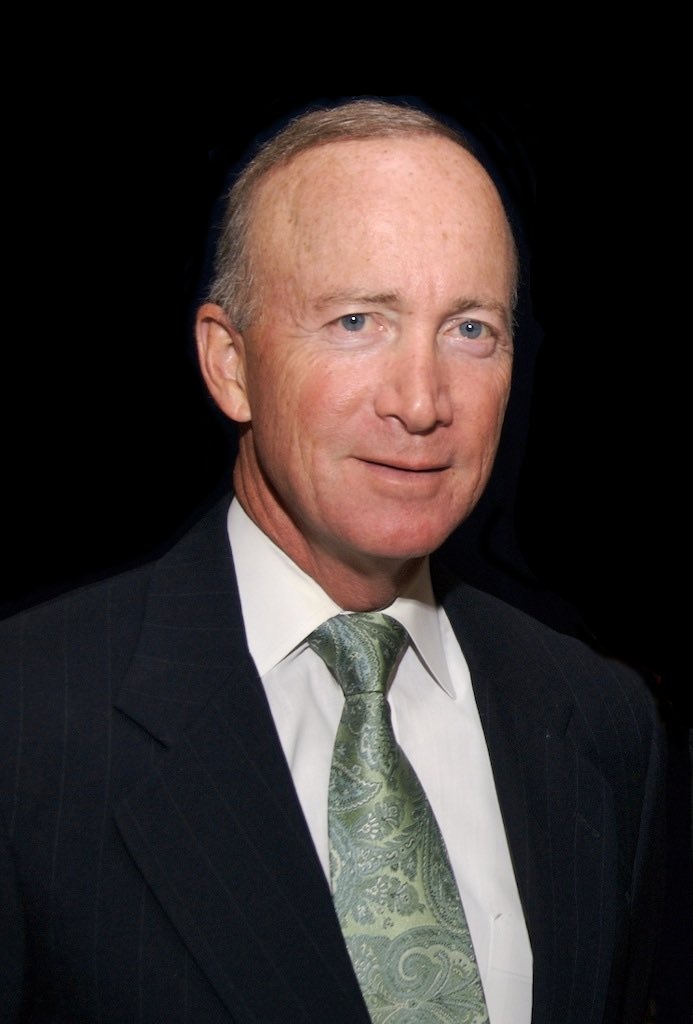
• • •
Missing some Tweet in this thread? You can try to
force a refresh



